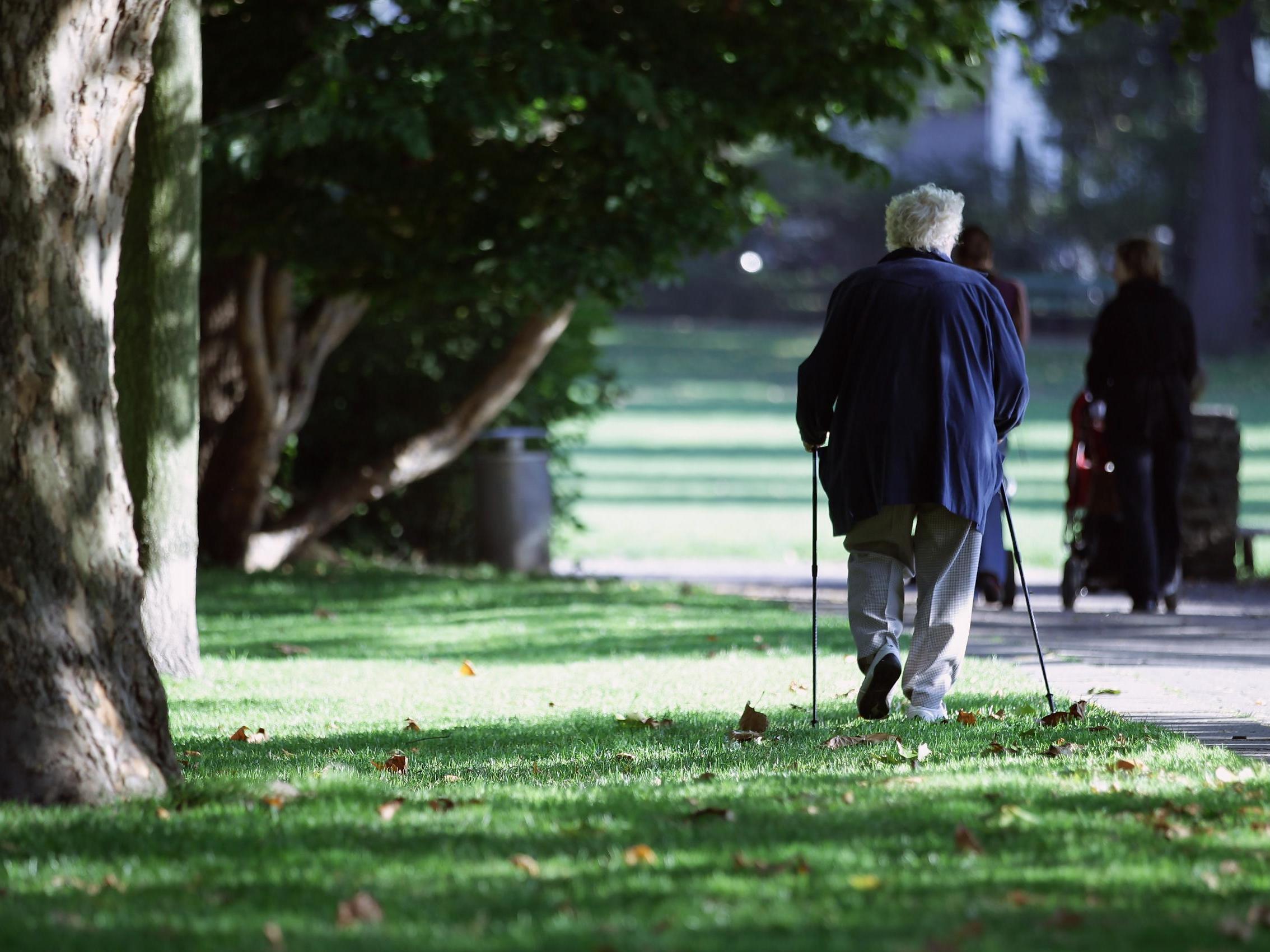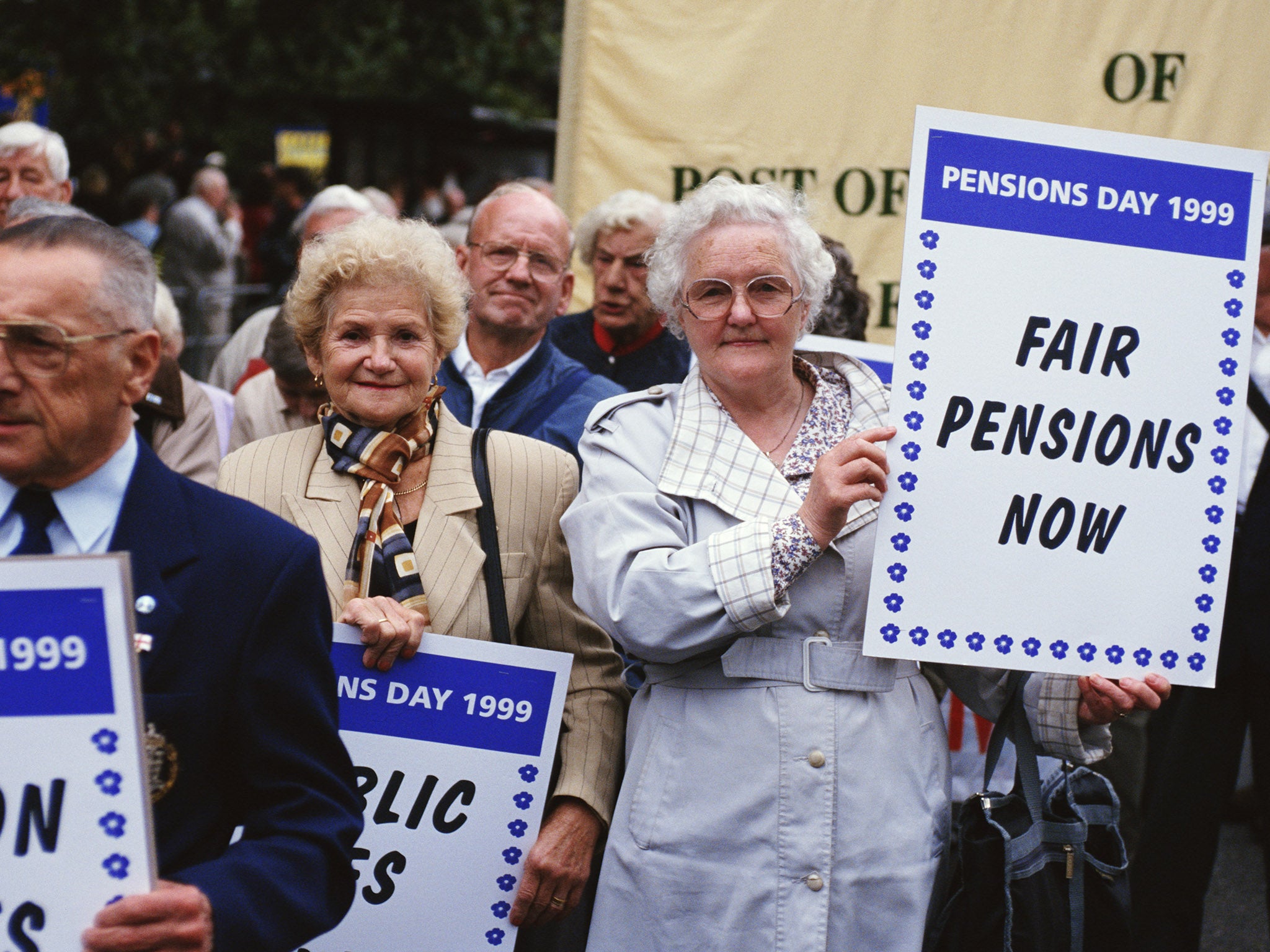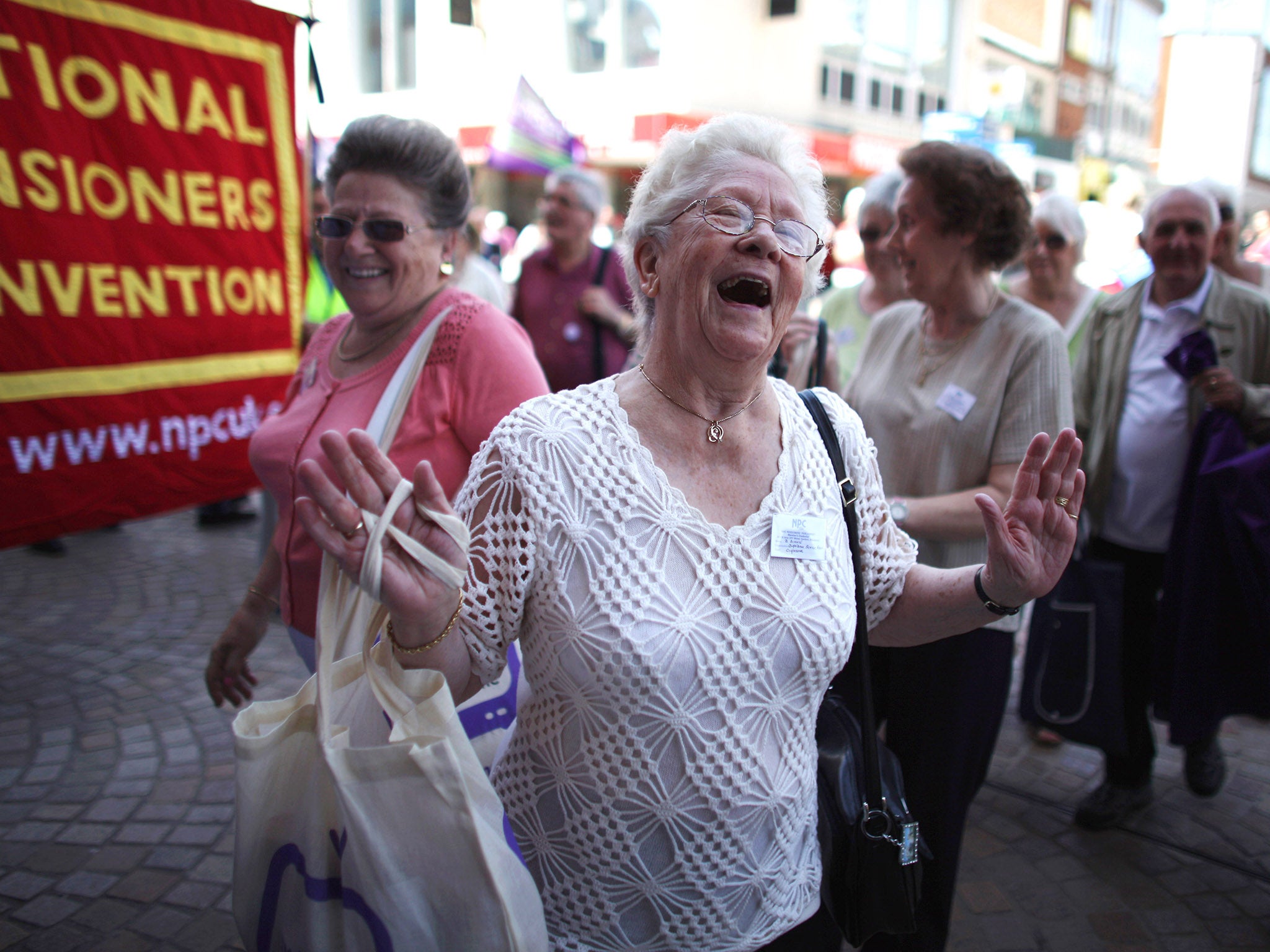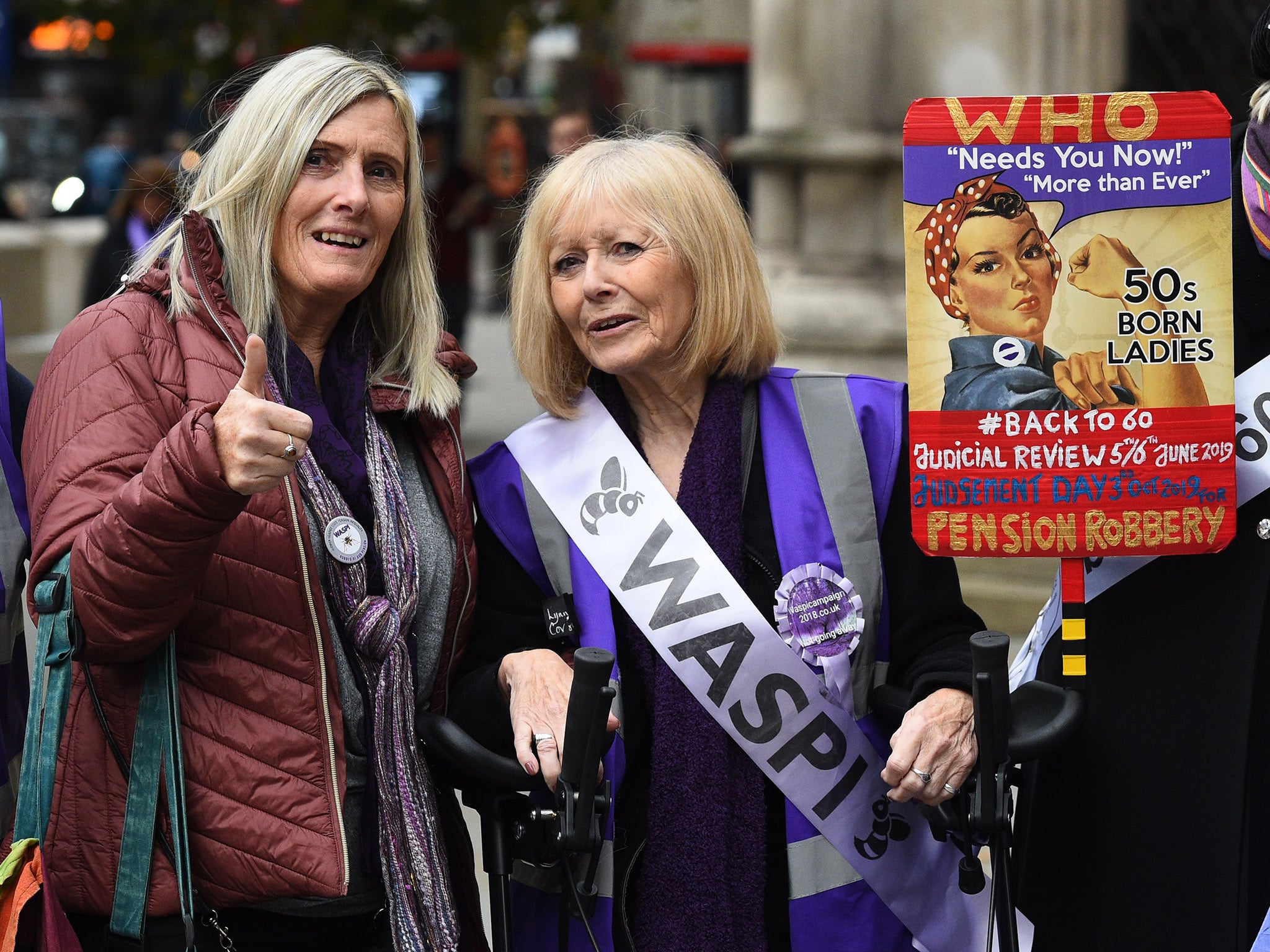Gender bias will create pension poverty for all women until 2100
Inequality means half the population will be blindly fighting economic discrimination into the next century. It is time we defused this ticking time bomb, warns Kate Hughes


These days they are known as the silent generation – the age group that somehow survived years of apocalyptic global warfare and years more of crippling austerity. They oversaw the introduction of the NHS, paying far more into the state in taxes than they ever got out. If they’re still alive, and especially if they are female, there’s a real chance they are now financially destitute.
A quarter of the UK’s oldest single females, reliant entirely on their state pension for income, are living below the poverty line, according to data from several prominent age charities. With few years of national insurance (NI) to make them eligible for much state support, and traditionally reliant on their partner’s savings after retirement, these long-living women who have seen the full spectrum of what life can throw their way are ignored by politicians, businesses and society at large.
The stories of women living in a single room, spending the last of their days deciding whether to turn the lights on or heat their food, haunt us. Or at least they should. Because while we are all distracted by the extraordinary spending power of the baby boomer generation, history is repeating itself. Not by those retiring today or even in a decade – though there are plenty of struggling female pensioners there too – but by the youngest generation of British women. Few of them have a clue what they are sleepwalking into.
The latest figures from the Department for Work and Pensions (DWP) show that only 44 per cent of the 1.1 million people receiving a state pension get the whole thing. And that’s only £168.60 a week. That does not go far, especially if we’re still paying rent or a mortgage when we stop work – a growing possibility as property prices continue to streak away from earnings.
You will need at least 10 years of NI contributions to get any state support in old age and 35 years’ worth to secure the full state pension. That is where the first of many quiet assumptions kicks in. That you’ll be earning enough for 35 years to pay NI. Initially it doesn’t sound too bad. Start working at 18 and work full time to 53. Easy. Even start work at 21 and go to 56. Fine.
Start work at 21, take two years out on parental leave, and a further five to care for a parent with complex, round-the-clock, needs due to dementia? If you did not apply for various benefits like the carer’s allowance, (ever heard of that one? It is unclaimed by around 400,000 people) you could come up short until you’re at least 63. Throw in an extra couple of years part-time on a low-paid job or get struck down with ill health yourself at any time during your working life and you are in real trouble.
Meanwhile, at the other end of their working lives, women can expect to take on caring responsibilities more than a decade earlier than men
NI is paid by all those earning more than £166 a week. Working part-time, you will need to earn, crudely, more than £10.38 an hour to earn the right for the government to take 12 per cent of your salary off you to pay for your old age benefit. The national minimum wage for this tax year is £8.21 an hour for the over-25s. The national living wage is still only £9 an hour.
If that all sounds a bit familiar, you are probably female. We know that 60 per cent of low earners and 73 per cent of part-time workers are women. We also know the burden of care still falls on the shoulders of women by default. In fact, the state system penalises families whose male partners take up shared parental leave because women can get 90 per cent of their salary in support if they look after the kids but men can only receive £145 a week if they do. It makes no sense at all.

Unsurprisingly, a recent study by the Trades Union Congress (TUC) found that the uptake of shared parental leave was just 1 per cent last year because it is unaffordable for huge numbers of parents. Until those benefits are equalised, nothing will change.
Meanwhile, at the other end of their working lives, women can expect to take on caring responsibilities more than a decade earlier than men, the charity Carers UK has warned. Half of women will be responsible for taking on an elderly relative by the age of 46, compared to half of men who can expect this at 57. The impact on earnings, and therefore those critical NI contributions, could be and regularly is catastrophic. So the state’s pension saving system is unfit for the real lives of millions of women. Unfortunately for half the UK population, the world of privately funded retirement saving is worse.
However, things were genuinely looking up for a while. The workplace pension scheme – a massive undertaking that fundamentally changed the world of retirement saving when it was launched in 2012 – was designed to combat the UK’s massive retirement savings gap at a time when increasing longevity is placing a growing burden on the state.
Employees are automatically enrolled on to the scheme, contributing a minimum of four per cent of their qualifying earnings into their savings pot. The employer pays in 3 per cent and the government tops up by 1 per cent to reach a minimum of 8 per cent, though your circumstances may differ if you have already been paying into a workplace pension before the national scheme was rolled out. The rollout of the workplace pension has undoubtedly helped deflect real old age hardship.
More than half of the UK’s women are now saving enough for their retirement. At 57 per cent of the female population, that’s the highest it’s been in 15 years, according to research by the life insurance company Scottish Widows. We are now putting away almost 5 per cent more than we were in 2007-08, worth an extra £5,900 in income for every year of retirement, on average. The number of women putting something to a pension pot has risen by just under 15 per cent over the past 15 years, far outstripping the rise in participation among men during the same period.
But now that the scheme has finished rolling out, that improvement has stalled and its fundamental flaws are more apparent. The scheme does not kick in until you’re earning more than £10,000 through any single job, the workplace pension is failing to catch those who are not earning earn enough to qualify – many of the same women that won’t get the full state pension either.
Three-quarters of the employees who are ineligible for automatic enrolment are women. Plus, of course, you also have to be an employee. The millions of self-employed UK workers – both female and male – have so far been left to fend for themselves.

Faced with a gender pay gap that is not expected to close until 2050, those women who are eligible are contributing significantly less than men. The gender pay gap currently stands at just under 9 per cent a year. But when part-time workers are included, the gap doubles in size. The impact of all this, year after year, is that men earn an average of 80 per cent more over their lifetimes than women.
2100
The year the gender pensions gap is expected to close
It’s no surprise that by the time they retire the women who do have private pension savings will typically have £78,000 less in it than men. That is 2.5 times the average household disposable income in the UK. And if the pay gap does not close until 2050, we don’t expect the gender pensions gap to do the same until 2100. “We have come a long way, but 15 years later there is still an unacceptable gap between men and women,” warns Jackie Leiper, distribution director at Scottish Widows. “We want to see a series of reforms that allow for a more tailored approach to saving.
The world changes at such a rate now that I couldn’t possibly imagine what my grey years would look like
“Increased default savings levels, improving the scope of auto-enrolment and managed access to pension savings to support a first home deposit or to overcome a period of financial hardship are just some of the ways we can make a real difference. By doing so, we can ease the financial stresses that disproportionately impact women, such as those that go alongside life events including starting a family and buying a first home.”
And that is the real-life problem. There just is not enough money coming in to cover today’s costs, let alone tomorrow’s. More than one in 10 working women drop out of their workplace pension in their twenties because they just can’t afford it. Whether it’s due to low pay, the responsibilities of care or its cost, family circumstances or a combination of all these and others – they have opted out of a workplace pension even though they know it would have meant securing free extra money for old age from their boss and the state.

“While this may seem like a good idea for them in the short term to fund other priorities, opting out of a pension will only lead to greater financial problems in the future,” warns Helen Morrissey, pension specialist at Royal London.
“Getting back into the habit of saving for later life is difficult for women if they have missed significant contributions so we need to do everything we can to encourage these women to stay saving for the long term.” But we are not, because we are not engaged.
“I don’t really feel the world is set up to care or cater for me,” says Emily Lavinia, a content consultant from London. “To be honest, I spend more time thinking about how I will look out for my parents when they’re elderly, rather than myself when I am. The world changes at such a rate now that I couldn’t possibly imagine what my grey years would look like. My friends and I are all more concerned with staying on top of things in the here and now.
“Prices go up quickly, governments shuffle and reshuffle overnight, the world is literally on fire. If I survive world war three, sure, maybe I’ll buy a house and get a pension. But at my age, who’s really thinking that far ahead?”
90
The average life expectancy for women
These are all very reasonable sentiments, but such disengagement is far more prevalent in female workers. More than a third of UK women have no idea how much they have saved, or not saved, in pensions for example – double the number of men. More than one in 10 of those women would find they have absolutely nothing, according to data from finance provider Aegon, a figure that has doubled in only two years.
“Knowledge is key to helping solve the gender pension gap so it is really worrying to see that more than a third of women remain in the dark about what they have saved for retirement – if anything at all,” says Kate Smith, head of pensions at Aegon, who warns that only 60 per cent of women have ever tried to work out how much they might need for old age.
“We already know that women are at a disadvantage in terms of pay, childcare responsibilities and costs and reduced working hours, but by not having a complete picture of their financial situation they are putting themselves at a further disadvantage. That picture includes their pension.
“Showing an interest in what you have saved in a pension, or what you might need, could be the difference between the retirement you want and the retirement you get.”
And yet the quiet, underlying, constantly reinforced message is actually one of discouragement.
From birth, that message is that pensions and investments are still for men and boys. Analysis of figures from the Office for National Statistics (ONS) shows that of the 33,000 children under the age of 15 who are lucky enough to have money paid into a pension for them, barely a quarter are female.
33,000
The number of children under the age of 15 who have parents putting money into a pension for them
In other words, parents, grandparents and family friends are far more likely to save for boys than for girls despite the fact that women and girls could really use the money, possibly because the money is partly coming from a generation whose experience was that men usually had the lion’s share of pension income.
When those children grow up, the same defaults are quietly reinforced again and again. The Financial Conduct Authority’s (FCA) handbook refers to financial customers as “he”, for example. The 2000 Financial Services Markets Act refers to every individual in a senior role as “he”. If women seek financial advice about their current or future money matters, there is only a tiny chance of that adviser – someone they need to fundamentally understand and appreciate the nuances of their financial and personal life – being female.

“We are sitting on a ticking time bomb created by a financial system that only recognises men as the primary user and beneficiary,” says Bev Shah, chief executive of diversity campaign group, CityHive. “The industry needs to act for the sake of 51 per cent of the population even if our own regulator continues to refer to the customer as ‘he’.”
The gender pensions gap, then, is the result of layer after layer of decision making and product design based on the assumption that the nation’s financial lives are those of men. They will continue to blindly expose millions of women to the risk of old age poverty because it is quite hard work to unravel it all. Pensioner poverty is rising as longevity continues to creep up, housing costs rise and the price of social care looms larger and larger on the horizon. Girls born today will probably live until the age of 90, boys to the age of 87. Care costs will hit them much harder than men. Women need more money, not less.
Self-employed women need to set up a personal pension and aim to pay regular contributions into it
The much-delayed, government-backed, pension dashboard promises to help women and men get a handle on what they have, what they need and how they might get there by, eventually, showing all their pensions savings in one place, including their state pension forecast. In the meantime, women and men will need to request details separately, including checking for any retirement savings they have lost track of.
Services from the likes of the Pension and Lifetime Savings Association (PLSA) can also provide information on how much workers need to save bSased on their age, current savings and other circumstances.
“There are a number of things women can do to make sure they are saving enough for retirement. Those in employment with access to a pension shouldn’t opt out of their workplace pension scheme and should do what’s necessary to maximise their employer contributions. They should view this as part of their pay package,” says Smith. “It’s essentially free money so don’t throw it away.
“Self-employed women need to set up a personal pension and aim to pay regular contributions into it. They should view this not as an expense but as a means of rewarding themselves in the future.
“A retirement plan is key to these actions being effective. Outlining goals and how to achieve them is the first step to getting retirement plans on track. It’s important for women to take charge of their pension by regularly reviewing their contributions, fund choices and how much they have saved.
“Women who have taken maternity leave or time out of work as a carer should try to make up the pension shortfall. Guidance or advice from a professional could go a long way to helping women tackle the impact of disrupted working patterns.
“Don’t leave it too late.”
Join our commenting forum
Join thought-provoking conversations, follow other Independent readers and see their replies
Comments